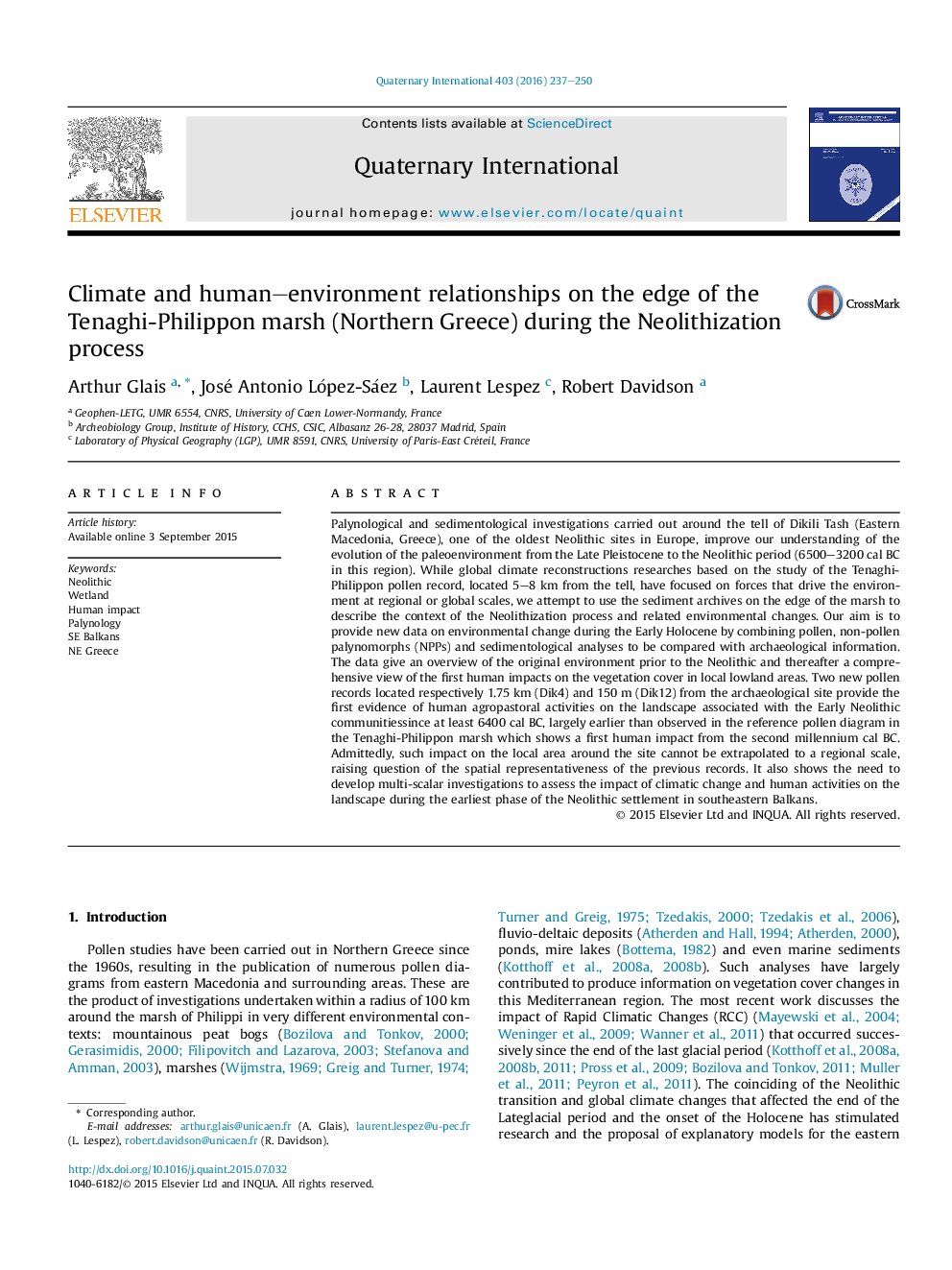| کد مقاله | کد نشریه | سال انتشار | مقاله انگلیسی | نسخه تمام متن |
|---|---|---|---|---|
| 1040032 | 1484095 | 2016 | 14 صفحه PDF | دانلود رایگان |
Palynological and sedimentological investigations carried out around the tell of Dikili Tash (Eastern Macedonia, Greece), one of the oldest Neolithic sites in Europe, improve our understanding of the evolution of the paleoenvironment from the Late Pleistocene to the Neolithic period (6500–3200 cal BC in this region). While global climate reconstructions researches based on the study of the Tenaghi-Philippon pollen record, located 5–8 km from the tell, have focused on forces that drive the environment at regional or global scales, we attempt to use the sediment archives on the edge of the marsh to describe the context of the Neolithization process and related environmental changes. Our aim is to provide new data on environmental change during the Early Holocene by combining pollen, non-pollen palynomorphs (NPPs) and sedimentological analyses to be compared with archaeological information. The data give an overview of the original environment prior to the Neolithic and thereafter a comprehensive view of the first human impacts on the vegetation cover in local lowland areas. Two new pollen records located respectively 1.75 km (Dik4) and 150 m (Dik12) from the archaeological site provide the first evidence of human agropastoral activities on the landscape associated with the Early Neolithic communitiessince at least 6400 cal BC, largely earlier than observed in the reference pollen diagram in the Tenaghi-Philippon marsh which shows a first human impact from the second millennium cal BC. Admittedly, such impact on the local area around the site cannot be extrapolated to a regional scale, raising question of the spatial representativeness of the previous records. It also shows the need to develop multi-scalar investigations to assess the impact of climatic change and human activities on the landscape during the earliest phase of the Neolithic settlement in southeastern Balkans.
Journal: Quaternary International - Volume 403, 1 June 2016, Pages 237–250
